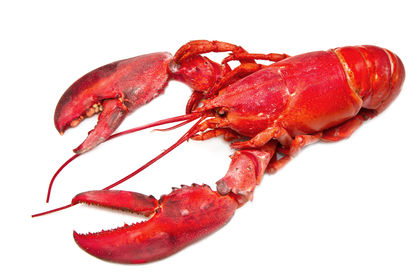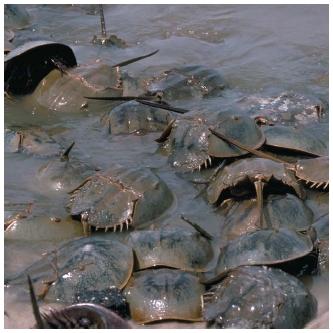Crustaceans

The crustaceans are a group of animals that belong to the class Crustacea in the phylum Arthropoda (organisms with segmented bodies, jointed legs or wings, and an external skeleton). The class includes a wide variety of familiar animals, such as barnacles, crabs, crayfish, copepods, shrimp, prawns, lobsters, water fleas, and wood lice. More than 30,000 species of crustacea have been identified, the majority of which live in water. Species that live in moist habitats on land, such as wood lice and pill bugs, are believed to have evolved from marine species.
Most crustaceans are free-living but some species are parasitic. Some even live on other crustaceans. Some species are free-swimming, while others crawl or burrow in soft sediments.
General structural characteristics
Despite such an extraordinary diversity of species, many crustaceans have a similar structure and way of life. The distinctive head usually bears five pairs of appendages (limblike attachments). Two pairs of these appendages are antennae that are used to detect food as well as to sense changes in humidity and temperature. Another pair of appendages are mandibles (jaws) that are used for grasping and tearing food. The final two pairs of appendages are maxillae, armlike projections used for feeding purposes.
The main part of the body is taken up with the thorax and abdomen. Both of these segments are covered with a tough outer skeleton, or exoskeleton. The exoskeleton is generally harder than it is in other arthropods because it contains limestone in addition to chitin (pronounced KITE-in), the usual skeletal material.
Attached to the trunk region are a number of other appendages which vary both in number and purpose in different species. In crabs, for example, one pair of appendages may be modified for swimming, another for feeding, another for carrying eggs, and yet another for catching prey.
Life patterns
Crustaceans exhibit a wide range of feeding techniques. The simplest of these techniques are used by species such as the tiny shrimps and copepods that practice filter feeding. In filter feeding, an animal rhythmically waves many fine oarlike structures known as setae back and forth. This motion creates a mini water current towards the mouth. Plankton and other suspended materials are carried into special filters and then transferred to the mouth.
Words to Know
Appendage: A limblike attachment extending from the main part of an animal's body.
Arthropoda: The largest single animal phylum, consisting of organisms with segmented bodies, jointed legs or wings, and exoskeletons.
Dioecious: A type of animal that exists as either male or female.
Exoskeleton: An external skeleton.
Free-living: An organism that is able to move about in its search for food and is not attached to some other organism as, for example, a parasite.
Hermaphrodite: An organism with both male and female sex cells.
Larva: An immature form of an organism capable of surviving on its own.
Molt: The process by which an organism sheds its outermost layer of feathers, fur, skin, or exoskeleton.
Parasite: An organism that lives in or on a host organism and that gets its nourishment from that host.
Seta: A thin, whiskerlike projection extending from the body of an organism.
Larger species such as crabs and lobsters are active hunters of small fish and other organisms. Other species adopt a scavenging role, feeding on dead animals or plants and other waste materials.
Smaller forms of crustaceans obtain the oxygen they need by gas exchange through their entire body surface. Most crustaceans, however, have special gills that serve as a means of obtaining oxygen. Simple excretory organs provide for the removal of body wastes such as ammonia and urea. Most crustaceans have a series of well-developed sensory organs that include not only eyes, but also a range of chemical and tactile (touch) receptors. All crustaceans are probably capable of detecting a light source, but in some of the more developed species, definite shapes and movements may also be detected.
Breeding strategies vary considerably among crustaceans. Most species are dioecious (pronounced die-EE-shus), that is, are either male or female. But some, such as the barnacles, are hermaphroditic. An hermaphroditic animal is one that possesses both male and female sex organs. Fertilization usually occurs sexually between two individuals. The fertilized eggs then mature either in a specialized brood chamber in some part of the female's body or attached directly to some external appendage

such as a claw. Most aquatic species hatch into a free-swimming larvae that progress through a series of body molts (where they shed their skin) until finally arriving at the adult size.
useful in a way that it helps in giving the researcher information/s about this topic.